How Important are Plyometrics to Your Fitness Regimen?

Plyometric exercises can help in the weight room, especially if you’re stuck in a training plateau, having trouble reaching full extension in your lifts or generally need more muscle and power and muscle.
Plyometrics are explosive compound movements, commonly done with your own body weight or very light loads such as plyo pushups, box jumps and jump squats. The goal is to train for maximum force production in the smallest amount of time, so reps are kept low and intensity and effort levels are high.
So how do plyometrics - known for increasing agility and speed - really help when it comes to weightlifting?
They do this by increasing the strength and efficiency of the fast-twitch muscle fibers. The fast-twitch fibers are the largest, strongest fibers in our body - trained through heavy lifting, anaerobic efforts and explosive movements. This is contrary to their slow-twitch counterparts, which are typically geared toward endurance and aren’t as high in absolute strength.
Plyometric training increases the strength and efficiency of the fast-twitch fibers by optimizing what’s called the “stretch-shortening cycle.” This cycle occurs when you change directions in a hurry, such as when landing from a jump and jumping up again, or quickly making a cut to change directions. It's a three-step process in which your muscles slow down your body's momentum, hold on to the energy for a tiny fraction of a second and then convert that energy into forceful movement.
During the first phase – lengthen - your muscles get longer to slow your body down. They do this whenever you need to absorb impact, such as when your feet hit the ground after a jump. Your muscles, such as your glutes, quads and hamstrings, stretch and create tension until your body is no longer moving. Just like a stretched rubber band, your muscles now contain elastic energy.
The second phase – load – is the shortest, but most important. Ideally, this phase takes only 15 to 20 milliseconds (any longer, and you lose the stored energy). If you load fast enough, the body takes that energy and channels it into your next movement.
In the final phase – fire - your muscles contract quickly and forcefully to produce a powerful movement, like a jump.
Plyometric exercises maximize the force created by this cycle, activating more muscle fibers, thus building more muscle. That, coupled with the ballistic style of the exercise cause a high muscle tear rate. When the torn muscles heal, they heal bigger and stronger.
In fact, plyometrics are so effective at tearing muscles that they shouldn’t be used on a daily basis. If you’re new to plyo, start with two to four times per week, with 48 to 72 hours rest in between. But even plyo training just twice a week is effective in producing power and strength gains, according to one study.
Here are three good plyometrics exercises from Greatist.com you can start off with to help with your weightlifting routine.
The moves should focus on good form and all-out effort. That's why it's best to do these at the start of a workout before muscles fatigue and performance slows.
Start with three to four moves at the start of your workout (after a warmup); two to three sets; three to five reps per set. Take at least 90 seconds to recover between each set.
Plyo Push-Ups
Begin in push-up position with hands on the floor, placed slightly wider than shoulder width apart and your feet together. Keeping your back flat, slowly lower your body toward the ground. In one explosive movement, push up and away from the floor as quickly as possible, bringing your hands off the floor.
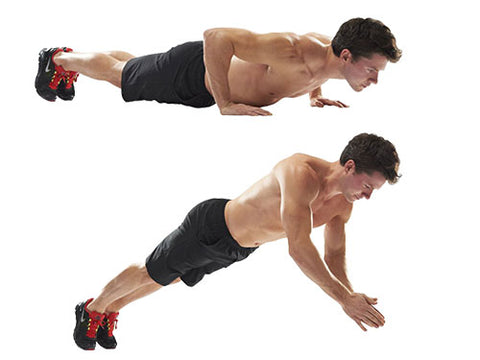
To make it easier, drop to your knees and practice pushing up with a clap before you move to your toes. To make it harder, turn it into a full-body plyometric pushup. From a high plank position, lower into the bottom of your push up with elbows wide and at a 90-degree angle. Explosively push through the hands and keep an extremely tight core so that your entire body momentarily floats off the floor. Keep your core tight upon landing so that your hips don't drop toward the floor, and you land in a high plank. Move right into the next rep.
Squat thrusts
From a high plank position, jump feet forward into a wide squat and bring hands off the ground either into a prayer position or in front of your chest. Keep your back straight, shoulders down, and chest out while in the low squat. Pause for a second, then place hands on the ground and jump feet back into a high plank position. Repeat as quickly as possible.
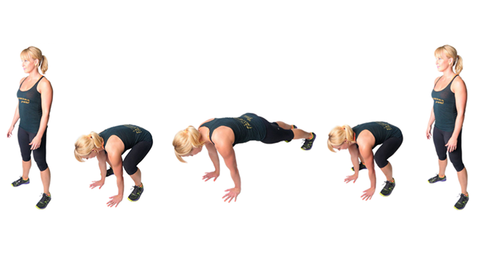
Reverse lunge with knee up
Stand with feet hip-width apart and step your right foot back, coming into a low reverse lunge. Shift all your weight to your left foot, engage your glutes, brace your core. Bring your right foot forward and simultaneously jump off your left foot, bringing right knee to your chest. Land softly on your left foot, and immediately step back into a low lunge to repeat.
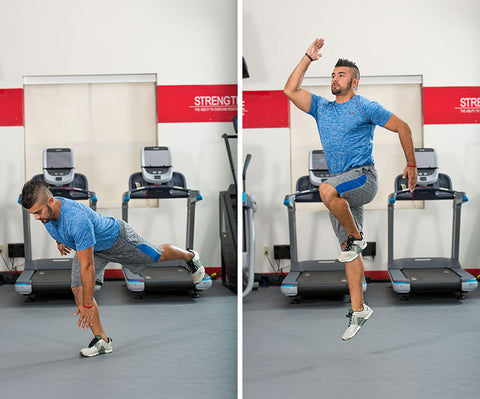

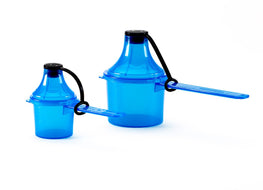

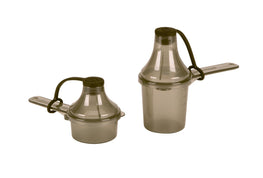



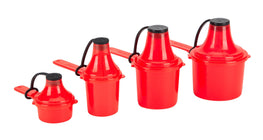
achat levitra pro[/url]